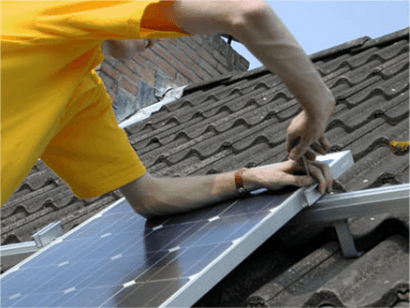
Europe accounted for two thirds of the world-wide newly installed photovoltaic (PV) capacity in 2011, with 18.5 GW. Its overall PV capacity totalled 52 GW. The yearly electricity produced by PV could power a country with the electricity demand of Austria, which corresponds to 2% of the EU's electricity needs. These are some of the highlights of the 2012 Photovoltaics Status Report published today by the European Commission’s Joint Research Centre.
The study summarises and evaluates the current activities regarding manufacturing, policies and market implementation world-wide, and according to Arnulf Jager-Waldau, senior scientist for renewable energy at the Joint Research Centre, finds that the healthy demand for solar energy in Europe in 2011 was driven by a sharp drop in solar panel costs.
"From 2008 to second quarter of 2012, residential PV electricity system prices have decreased by almost 60 per cent in the most competitive markets, and in some markets, the cost of PV-generated electricity is already cheaper than residential electricity retail prices," he wrote. "Due to falling PV system prices and increasing electricity prices, the number of such markets is steadily increasing," says Jager-Waldau in his forward to the report.
Over the past ten years, the PV industry grew in Europe by an average of over 40% per year and the production costs have decreased by around 60%. Underlying this progress is the EU commitment towards PV systems as a means to achieve the goal of using 20% of renewable energy by 2020.
Germany, Italy, Spain, the Czech Republic, France, Belgium, and the United Kingdom are the leaders in installed PV capacity in Europe. Since 2000, world-wide, total PV production had growth rates of between 40 and 90%.
The most rapid growth in annual production over the last five years was observed in Asia, where China alone accounts for more than 50% of the world's PV production. In addition, for the second year in a row, solar power was the renewable energy that attracted most investment, with a total of 98.5 billion euros world-wide, of which two thirds were concentrated in Europe.
The JRC reports highlights that “a challenge for the European industry in this field is China's massive investment in PV manufacturing”, which has led to an economy of scale in manufacturing in that country. However, the delivery of manufacturing equipment from Europe to Asia is still beneficial as Europe still has the lead in PV research and development, thereby innovating the European PV manufacturing equipment industry.
The report highlights that PV technology and its deployment is a global business and considers that future generations of PV technologies could spring from international cooperation on eco-innovation, in partnership with Asia and the United States.
In addition, it highlights that there is a large scope for PV innovation in the achievement of both energy efficiency and improved design in buildings. PV modules can be incorporated and specifically designed as building materials, functioning as an insulation material and fostering a new “European PV-architecture”, whilst at the same time providing one of the key technologies required to achieve zero emissions buildings.
For additional information:

